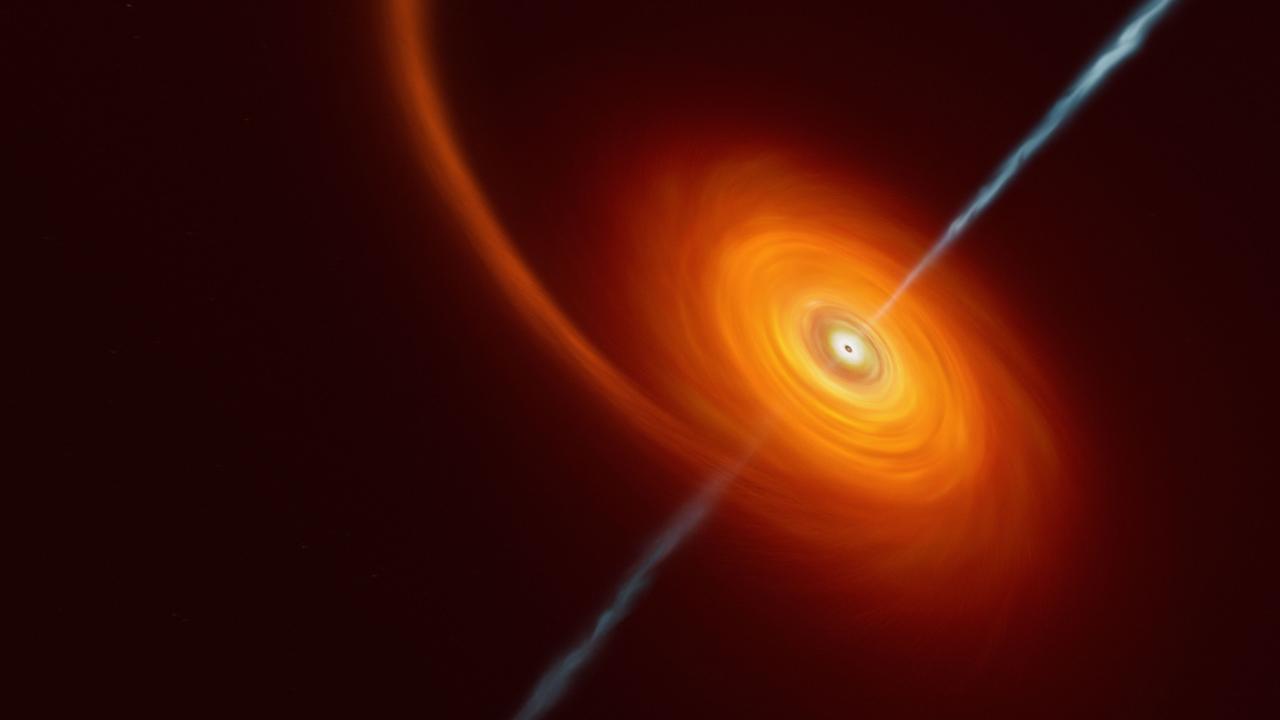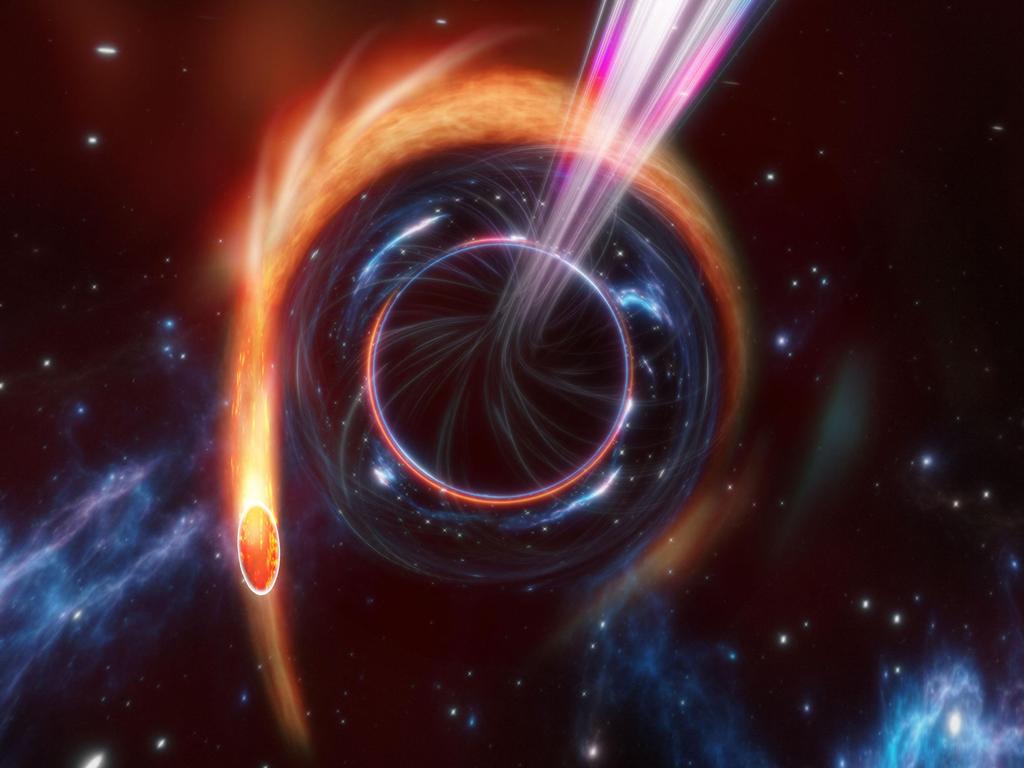Spray of light as star is caught travelling too close to a black hole
The dramatic moment a star encountered a supermassive black hole about 8.6 billion years ago and was torn apart in a unique stellar event has been snapped with help from Australian scientists

READING LEVEL: ORANGE
Australian scientists have helped to capture the moment a star travelled too close to a black hole and was torn apart, emitting* a powerful jet of light and matter – an entirely unique stellar* event.
Artistic impressions, released in Nature magazine on December 1, revealed the moment a star found a supermassive* black hole in its path.
“It was extremely bright and fading fast,” Swinburne University of Technology astronomer* and research co-author Professor Jeff Cooke said.
“We could see a star travelled too close to a supermassive black hole – a black hole millions of times more massive than our sun – which wasn’t very good for the star but was very cool for us, as it provided crucial information.”

First, the star was dramatically ripped apart by the gravitational* tidal forces of the black hole – similar to how the moon pulls tides on Earth, but far stronger, Professor Cooke said. Pieces of the doomed* star were swept up into a spinning disk of debris*, before it was entirely consumed.
Finally, as happens in just one per cent of cases, the otherwise dormant-looking* black hole launched a luminous* jet of matter, travelling close to the speed of light. It was what astronomers call a “jetted tidal disruption event”.
The event itself occurred about 8.6 billion years ago, in a galaxy* more than halfway across the observable universe.

Professor Cooke said the event was unique in recorded stellar history.
“If you were to survey the sky all the time, you would find several events like this a year – similar, but not the same,” Professor Cooke said. “We haven’t seen something even remotely similar for a decade, and even that wasn’t as bright.”
US astronomers discovered the curious event in February and quickly passed the task to those at Swinburne to confirm its nature. It then took several months of observation by a team of global scientists to fully understand what had occurred.

“When you look at the night sky with your eyes, it looks the same all the time,” Professor Cooke said. “But when you get a telescope on it, you see that things are exploding left and right. Things are varying and pulsating* and exceptionally dynamic*.
“We use these events to learn how elements are created and how the universe, piece by piece, was formed.”
GLOSSARY
- emitting: sending out light, sound, smell, gas or other substance
- stellar: relating to the stars, astral
- supermassive: having a mass many times that of the sun
- astronomer: scientist who studies the stars, planets, and other natural objects in space
- gravitational: relating to the force of gravity that acts on all matter in the universe
- doomed: certain to die, fail or be destroyed
- debris: broken or torn pieces left from the destruction of something larger
- dormant: when something is not active or growing but has the ability to reactivate
- luminous: brilliant, radiant, dazzling
- galaxy: a huge collection of gas, dust, billions of stars and their solar systems
- pulsating: expanding and contracting, commonly with a rhythmical beat
- dynamic: marked by continuous and productive activity or change
EXTRA READING
Black hole eats an Earth every second
First image of black hole in our galaxy
Cartwheel Galaxy snaps have space fans in a spin
QUICK QUIZ
- How many times bigger than the sun was the supermassive black hole?
- The gravitational tidal forces of the black hole were similar to what?
- Pieces of the doomed star were swept up into what?
- What did the black hole launch after consuming the star?
- How long ago did this dramatic stellar event occur?
LISTEN TO THIS STORY
CLASSROOM ACTIVITIES
1. Adopting new words
There are many impressive vocabulary choices featured in this news story. Choose three words from the glossary. Adopt the use of these words by writing them into a new sentence that is not related to the topic of this news story.
Time: allow 15 minutes to complete this activity
Curriculum Links: English; Science
2. Extension
Create an animation of what the stellar event described in this news story looked like. You may choose to create this using digital technology or make a “flip book” animation.
Time: allow 30 minutes to complete this activity
Curriculum Links: English; Visual Arts; Digital Technologies
VCOP ACTIVITY
Looking back in time
How amazing is space! Events that actually occurred billions of years ago are only reaching our telescopes now. We are essentially looking back in time when we look into the universe.
The description of the star being torn apart is very detailed; it really creates an image in our minds. The speaker has explained it very clear to us. It kind of reminds me of water being sucked down the plughole and creating a whirlpool.
Imagine that you have been given the opportunity to look through their telescopes into the universe. Describe in detail what captures your eye. Maybe it’s something you witnessed recently, like the red moon, but up close.
Use your VCOP skills to create a clear image for the audience.


